When Jeremy Mann wrapped work on his first feature-length film earlier this year, he immediately recognized the importance of his breakthrough in the medium. “…I will continue to film forever,” he says. “It’s a language which fills my soul with poetry.”

The film, The Conductor, a cerebral and at times surreal journey into an artistic dreamscape—think Lars von Trier or Nicolas Winding Refn, but shot with a painter’s sense of color and composition—allowed Mann to take a four-month hiatus from painting. That break from the easel directly inspired his newest works, on view beginning September 8 at Maxwell Alexander Gallery in Los Angeles. “…I decided to approach the new paintings with an open air of exploration, drawing from my abstract expressionist background, using tried-and-true techniques I learned from my MFA research (i.e., making myself uncomfortable with the materials and techniques to open new windows in this stale, dusty house) and feeding from something I’ve been developing for a long time now, my darkroom prints of Polaroids from homemade cameras.”
Mann’s paintings—both his evocative figures and his shimmering cityscapes—have long featured unfinished edges, blocks of raw color and abstracted elements that sought to frame his subjects within an emotional veil of expression, but his new works are transcending even further into this shattering realm of color and form.
Diese Geschichte stammt aus der September 2018-Ausgabe von American Art Collector.
Starten Sie Ihre 7-tägige kostenlose Testversion von Magzter GOLD, um auf Tausende kuratierte Premium-Storys sowie über 8.000 Zeitschriften und Zeitungen zuzugreifen.
Bereits Abonnent ? Anmelden
Diese Geschichte stammt aus der September 2018-Ausgabe von American Art Collector.
Starten Sie Ihre 7-tägige kostenlose Testversion von Magzter GOLD, um auf Tausende kuratierte Premium-Storys sowie über 8.000 Zeitschriften und Zeitungen zuzugreifen.
Bereits Abonnent? Anmelden

FULL EXPOSURE
Photographer Conor Martin documents the present using photographic methods of the past.
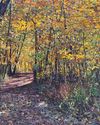
Autumnal Light
The landscapes and nature scenes of painter Jennifer Sowders are irresistibly tactile, filled with varying textures that seem to leap off the canvas.
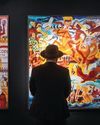
Art for All
Members of Art Dealers Association of America come together for a philanthropic affair.
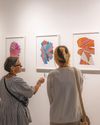
Modern Marketplace
Redwood Art Group brings together the San Diego region for another class-act celebration of contemporary artwork.
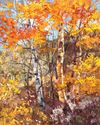
An Enchanting Evening
Scottsdale Artists’ School knows how to throw an art party.

Timeless Tales
Soft, warm undertones underscore the mood of enchantment that runs through Nom Kinnear King’s paintings.

Next Exit New York
Coming off his series that focused on San Francisco and Los Angeles freeway signs, artist Eric Nash’s sights are now set on New York. Now on view at George Billis Gallery's Manhattan location are seven of Nash's new oil paintings and two drawings that explore the signage of New York City freeways. Although Nash's work is tightly rendered, he doesn’t consider himself a photorealist, but rather someone who utilizes those techniques to express ideas.

Monster Mash
Vampires, witches, ghouls and all things that go bump in the night are the theme of the exhibition Monster Mash, now at Abend Gallery.

Inside/Outside
Those familiar with Geoffrey Johnson's populated by inky figures and trailing shadows that bleed into the wet streets, and architectural elements obscured to varying degrees by the misty atmosphere.
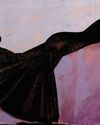
Bold Figures; Bold Color
For Brooklyn based painter J Louis, it’s all about balance, which can mean many different things in a composition, but for Louis, it’s about balancing his female figures among a unique landscape of color.